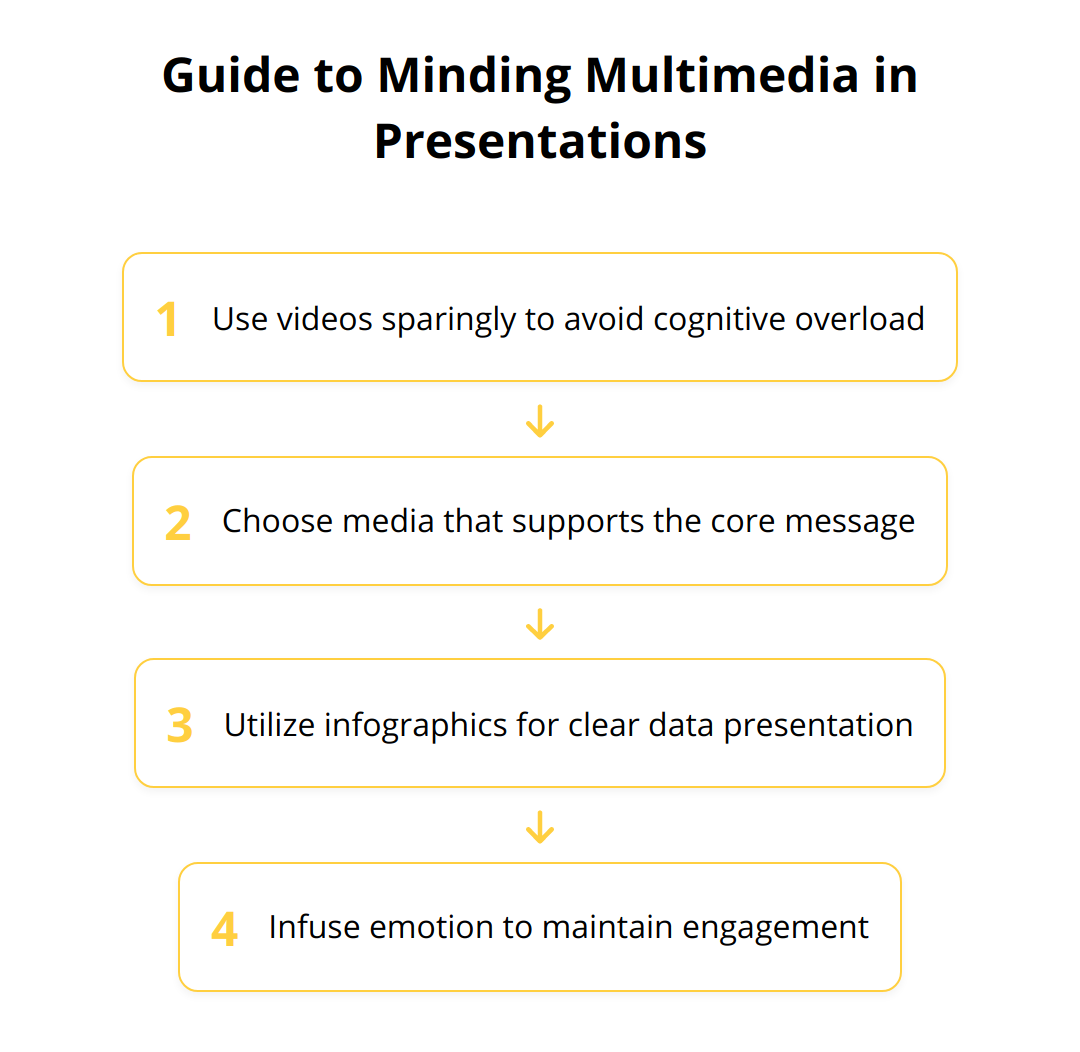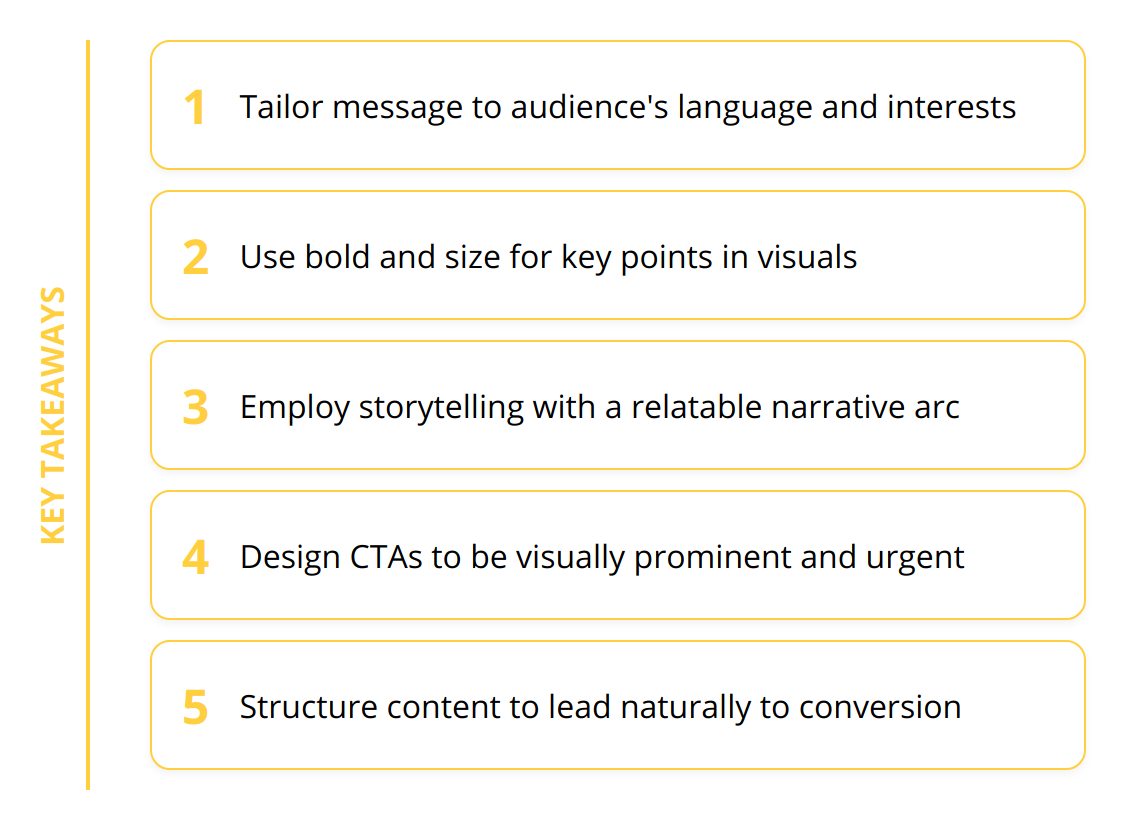How to Design Presentations that Focus on Conversion

The key to a successful presentation lies in its ability to convert passive listeners into active participants. Crafting a presentation that achieves this goal hinges on a deep understanding of your audience and the strategic use of design elements.
Simplicity in your visuals and a strong narrative can make your message stick, compelling your audience to act. Here’s how you can create presentations designed to turn interest into results.
Know Your Audience Well
Grasping the nuances of your target audience undeniably impacts the effectiveness of your presentation. First, zero in on who will be receiving your message. This isn’t just a matter of demographics but delving into the psychographics of your audience—their values, attitudes, interests, and lifestyle. For example, LinkedIn delivers a treasure trove of professional interests and can be used to research presentation topics that align with industry trends.
Next, absorb the needs and preferences that resonate with your audience. Engaging sales data and customer feedback provides concrete indicators of what problems your audience seeks to solve. Let’s say customer service inquiries frequently mention a particular feature or pain point; addressing this directly in your presentation ties your message to their immediate needs.
Finally, customizing your message to align with audience interests is non-negotiable. Tailoring doesn’t suggest a complete overhaul but precise adjustments ensuring your core message hits home. If your audience is tech-savvy, lay out your message with cutting-edge digital trends as a backdrop. This also involves adopting language that speaks to them—if they talk in ROI and conversion rates, ensure your presentation resonates with this terminology.
Here are a few actionable tips to take note:
- Interactive research: Conduct polls or surveys before the presentation to gather real-time audience insights.
- Social Listening: Use social media monitoring tools to understand trending topics among your target attendees.
- Testimonials: Include credible business testimonials that demonstrate understanding and solving similar audience challenges.
- Data-backed solutions: Highlight statistics or case studies showing success stories that address their needs.

Recognizing the intricacies of your audience’s world not only informs your presentation’s design but ensures that the call-to-action is so compelling they feel it’s made just for them.
Design for Impact
The layout and design of your presentation are not just cosmetic choices; they’re strategic tools to maximize clarity and maintain engagement. The effective use of visual hierarchy ensures your key messages stand out and are easily absorbed, while smart color and font choices can significantly influence how your audience interprets your message. Multimodal elements like videos and graphics, when used thoughtfully, can transform a passive experience into an interactive journey.
Effective visual hierarchy begins with understanding how the eye moves across the screen. You want the most important elements to catch attention first. To do this, size and contrast are your allies. Key points should be larger and bolder, making them the focal points on your slides. Bullet points can quickly deliver facts but keep them concise. A cluttered slide dilutes impact; instead, focus each slide on one major takeaway.

Your color scheme should align with your brand and the mood you intend to set. For instance, blues convey trust and calm, reds are energetic and urgent. The rule of thumb: use color sparingly to highlight significant points or to draw the eye to calls to action.
Font choice matters just as much as color. Sans-serif fonts like Arial or Helvetica are widely regarded as best for readability, particularly in digital formats. Text should not be too small; even if it means having less on a slide, legibility is key.
When it comes to multimedia, remember, less is more. Videos and animations are powerful but overuse can backfire, leading to cognitive overload. Use media to elucidate complex points or to infuse emotion, but make sure they support your core message. A well-placed infographic can elucidate data more clearly than paragraphs of text, as shown in effective data presentation.

A few essential tips include:
- Bold key phrases to stand out
- Apply consistent styles for a cohesive look
- Use white space to avoid crowding elements
- Embed short videos to exemplify points
- Include high-quality, relevant images
The design of your presentation is about guiding the viewer, making it effortless for them to follow your narrative and to take the next step. Your goal is a design that communicates, persuades, and ultimately, converts.
Crafting a Compelling Narrative
When creating a presentation that focuses on conversion, your narrative is essentially the path you lay down for your audience to follow. A well-crafted storyline ensures that from the moment they embark on your presentation journey, they are compelled to travel along with you right through to the desired action at the end. Let’s break down how to structure your content, wield storytelling as a persuasive tool, and craft clear calls-to-action that resonate with your audience.
Structuring Content for Impact
The structure of your content should not only inform but should lead naturally to your ultimate goal: conversion. Begin with a clear understanding of the problem or need, then lead your audience through the logic and emotional journey that brings them to your solution.
- Start with a pressing issue that hooks attention
- Transition to explaining the importance and relevance
- Present your solution as the natural, irrefutable answer
Introduce your topic with an arresting statement or a provocative question that immediately highlights the stakes. From there, ensure each subsequent point builds on the last, to keep your audience nodding along, already convinced of the rightness of your narrative before you reveal the ultimate solution.
Using Storytelling Techniques to Persuade
There’s a reason why storytelling remains a powerful tool in communication: it’s how humans naturally understand and connect with the world. A narrative arc with a clear beginning, middle, and end, rife with real-world scenarios, gives your audience context and makes the abstract tangible.
Infuse your presentations with stories of real people who have faced similar challenges and have overcome them through the solutions you’re offering. Lay out scenarios that paint a vivid picture of success, using impactful visual storytelling to drive the point home.

- Craft scenarios that your audience can relate to
- Use testimonials to add credibility and a personal touch
- Incorporate real-world success data that supports your narrative
Implementing Clear Calls-to-Action
The climax of your presentation is the call-to-action (CTA). Your narrative has been building to this point, and a weak CTA is like a deflating balloon – it lets all the air out of your pitch. Your CTA should be obvious, compelling, and easy to act upon.
Ensure that your CTA:
- Stands out visually on your slide
- Speaks directly to the audience’s needs
- Encourages immediate action with urgent, power-packed words
Avoid clutter around your CTA, both visually and textually. Minimize distractions so that your audience’s focus narrows down to the action you want them to take, be it signing up, contacting you, or watching a demo.
Your narrative is a journey you take with your audience towards a mutual goal. It is not about manipulating but about engaging, informing, and persuading your audience so thoroughly that by the end, acting on your CTA feels like the most natural step in the world. Use structure, storytelling, and clear CTAs, and watch as your conversion-focused presentations become a powerful tool in achieving your business objectives.
Wrapping Up
When it comes to presentation design with a focus on converting your audience, we’ve traversed a considerable journey. The key ingredients for forging impactful presentations are clear: know your audience intimately, design with intent, and weave a narrative that guides your audience to the desired action.

Audience-centric designs are pivotal. The nurture and conversion of potential leads hinge on how well the presentation resonates with them. Understanding your audience’s challenges, preferences, and language shapes a presentation that feels personalized and directly addresses their needs. Layer this with compelling design choices that emphasize key messages, and you have a winning formula for retention and engagement.
Moreover, presentations are not a set-it-and-forget-it affair; they require continuous learning and adaption. Audience preferences evolve, and so should presentation strategies. Integrating feedback, staying attuned to design trends, and refining your narrative are parts of an ongoing process that can help hone your presentation skills over time.
At Recherche Digital, we embody this ethos of audience-centric and conversion-driven presentation design. Our Golden Frame Presentation service is crafted with the singular objective of making every slide count towards your business goals. With a wealth of experience from working with over 1000 clients, our award-winning designers create presentations that not just capture attention but foster actionable outcomes.
Remember, the opportunity to leverage a professional presentation design service like ours comes with the assurance of a 100% Money Back Guarantee. We lay the groundwork so that the only thing left for you is to engage your audience and drive your desired conversion.
Whether you are looking to boost your brand image, increase opportunities, or outshine your competition, you can trust us to deliver professional results that exude quality and leave a lasting impact. Lean on our expertise to elevate your presentation game.
- Engage your audience strategically
- Drive conversions using audience psychology
- Customize presentations for impactful storytelling
- Stay informed and adapt for continuous improvement
- Partner with professionals for guaranteed results

 +91-9540344454 / 9999344454
+91-9540344454 / 9999344454 